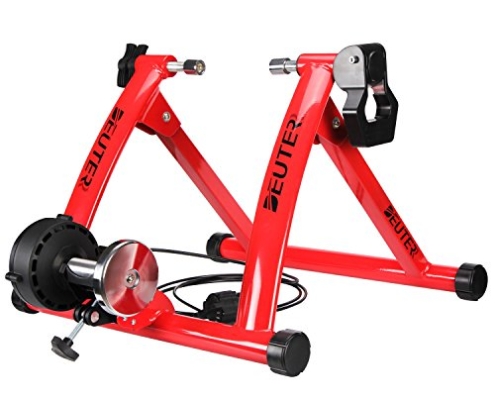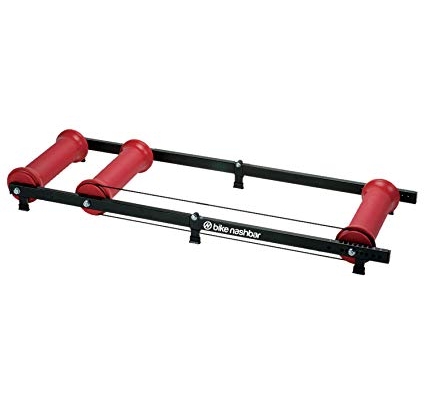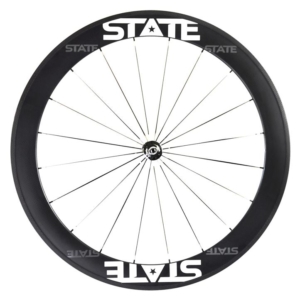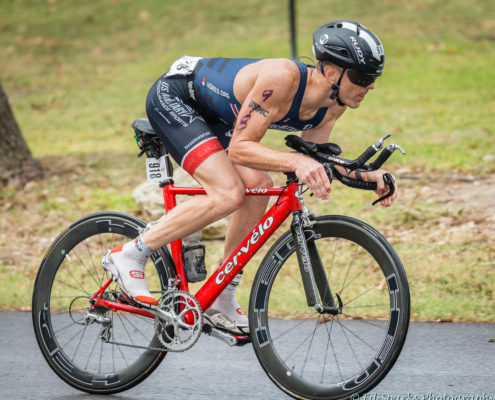Learn the difference between trainers and rollers
Bicycle Trainers
A bicycle trainer is typically a tri-pod devise that secures the bike into a stationary riding position. The rear wheel is held off the ground by locking the skewer into the trainer. The front wheel is held off the ground by a riser block to make the bicycle level. Some riser blocks have multiple positions to simulate climbing or descending. There are three types of resistance to your wheel:

Magnetic trainers are the best bang for your buck.
Wind – This affordable unit runs between $85 and $120, but expect a lot of noise. It is best used for short rehab stints, monthly rainy day riding sessions, or someone on a really tight budget. The noise from this type of trainer is caused by human force against the tire and from the small channels in the unit that catch air and add resistance. Due to the noise level, it is hard to watch television or listen to the radio while in use. Changing resistance levels is cumbersome because one must get off the bike to tighten or loosen the resistance to simulate different terrains. Although affordable, the parts of this unit are not created for heavy everyday use. Unnecessary wear to the rear tire will also occur when used daily.
Magnetic – Based on price ($125-$250), durability, and noise projection, this is the most practical unit of the three. It is not exactly like riding on the road, but similar enough. The mag trainer is set up like the wind trainer, but uses magnetic resistance instead of wind. This trainer allows for TV viewing and music listening. The unit also stands up to multiple rides per week. It will simulate multiple terrains just by changing the gears of the bike. Some units come with a wired remote shifter to change resistance without getting off the bike.
[bctt tweet=”With the magnetic trainer, cyclists get the most bang for their buck. ” username=”kerrvilletri”]
Bicycle Rollers
Wikipedia describes rollers as “a type of bicycle trainer which makes it possible to ride a bicycle indoors without moving forward. However, unlike other types of bicycle trainers, rollers do not support the bicycle. They normally consist of three cylinders, drums, or “rollers” (two for the rear wheel and one for the front), on top of which the bicycle rides. A belt connects one of the rear rollers to the front roller, causing the front wheel of the bicycle to spin when the bicycle is pedaled. The spacing of bicycle rollers can usually be adjusted to match the bicycle’s wheelbase. Generally, the front roller is adjusted to be slightly ahead of the hub of the front wheel.”

Rollers require great balance and handling awareness.








